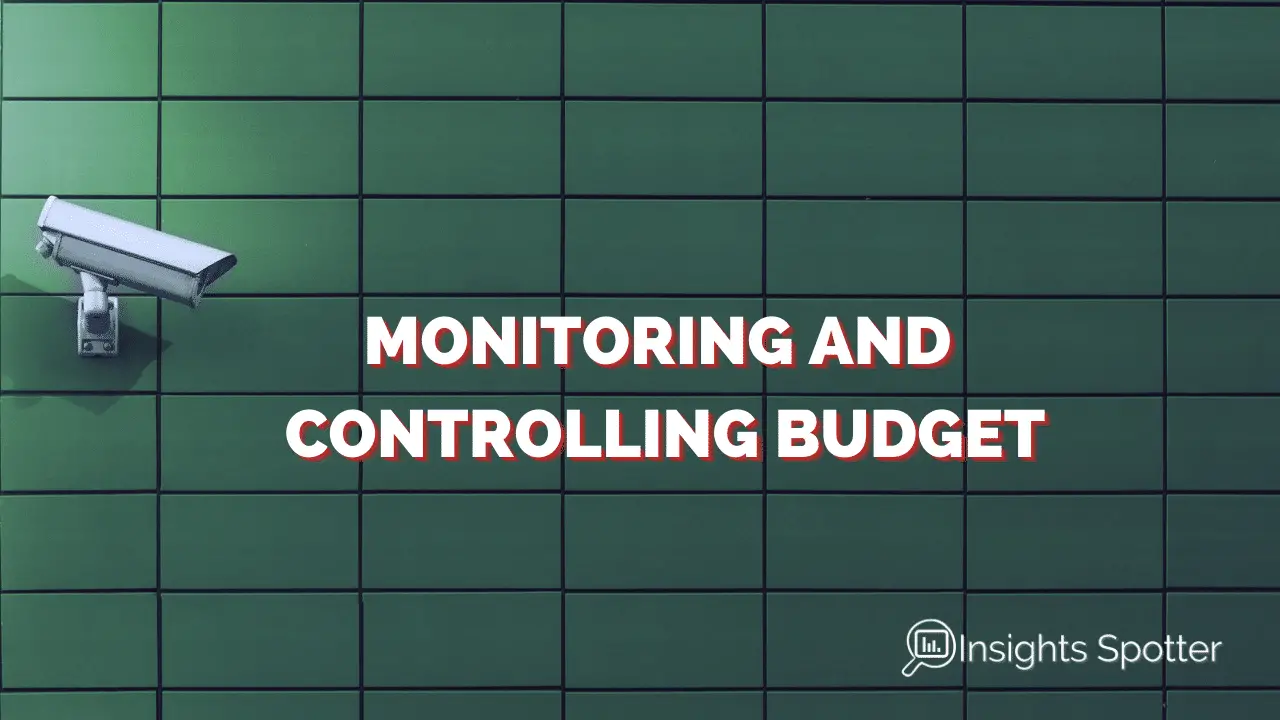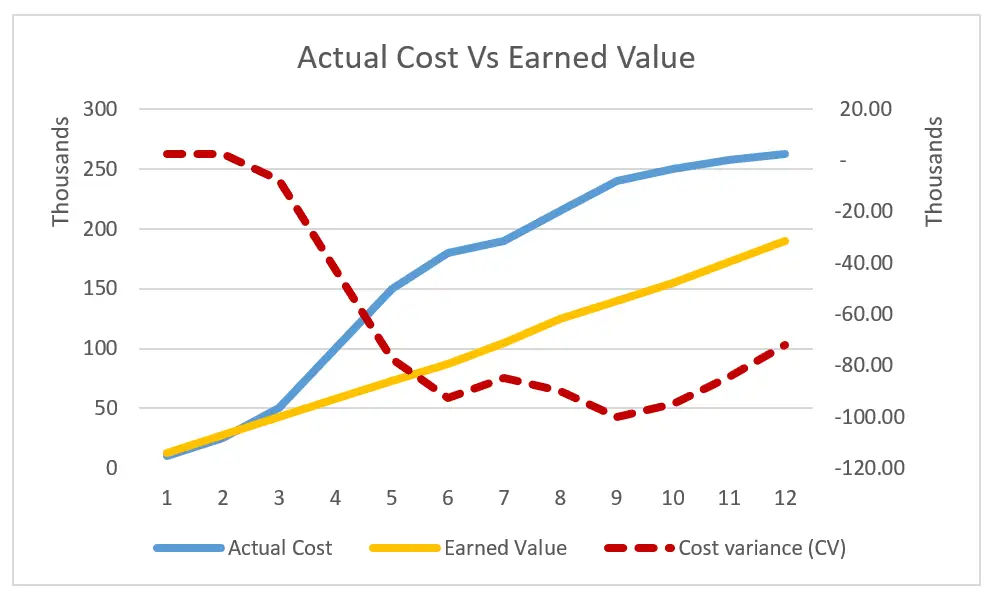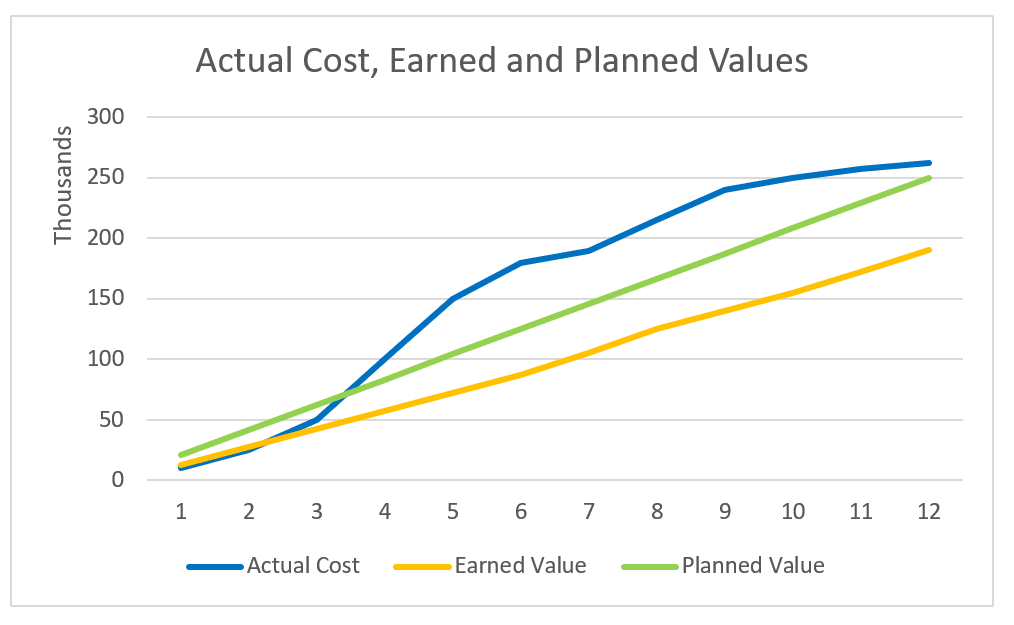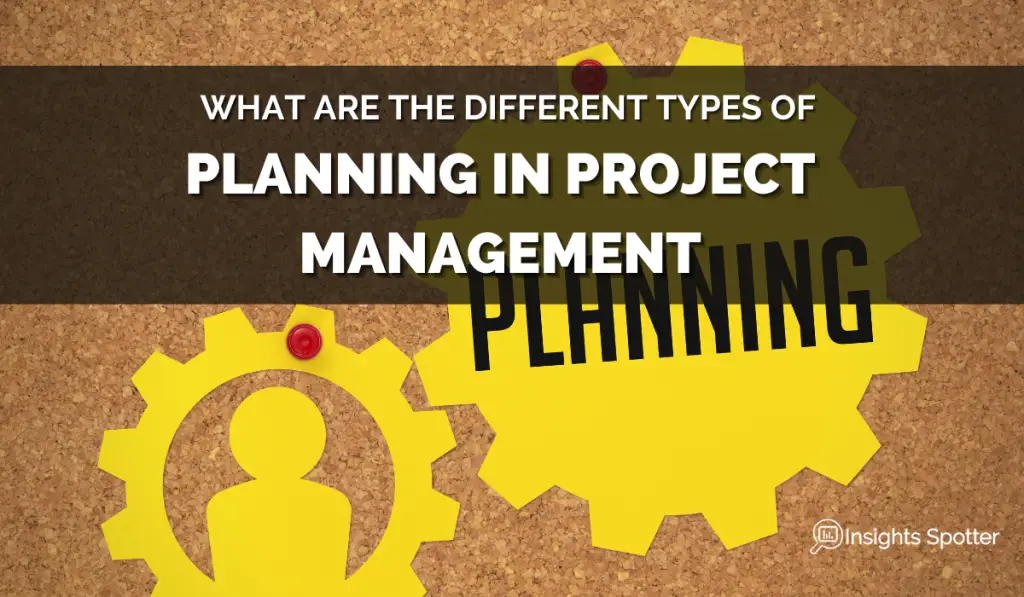What To Do When A Project Is Over Budget?
Even if you are the best project manager in the world, your project can go over budget. Have you just realised after monitoring and controlling that you will not complete your project with the assigned funds!? Not all is lost! But you have to act with confidence and purpose now!
To address the overrun budget, the project manager should start taking action and controlling the situation. The manager should analyse the current state, collate insights, and prepare recommendations. Then share data with stakeholders, facilitate the right course of action and implemented it.
Now, in the post, we will explain each step. Also, we will look into a pretty exhaustive list of actions you can take to pull the project back on target.
Having an overrun budget will impact stakeholders confidence; however, being decisive and taking action will show that they can trust you even in a difficult situation.

1. Taking Action And Understanding The Cause for Overrunning
There are many reasons why the budget can overrun. However, if you will be naive and hope things will just get better by themselves, you in for a surprise. On the other hand, if you take action, you might just save your project.
Still, we do not want to jump straight to curing the project without knowing a diagnosis, as you might be fixing the wrong thing. Thus, we need to understand the real reason for budget overrun.
What we are looking to establish is to understand the underlying cause. Then clarify why it happened; plus, understand if there is a group, resource, or individual who directly contributes to overrun.
Some of the reasons for overrunning are below. If you like to learn about these and more about other potential issues and how to prevent them, check out my post: Project Goes Over Budget.
- Wrong Estimate or Calculation: You have used the incorrect rates or assumptions of how many resources you will need.
- Scope Creep: Additional uncontrolled/unexpected project scope elements, which do not come with additional funding.
- External Factors: Factors like economic downturn
- Poor Budget Management: Had the proper budget but did not track well where funds have been spent.
- Bad Resource Utilisation: Had the correct resources but did not utilise their time or use effectively.
- Time Overrun: Project took longer than expected and contributed to additional costs.

2. Evaluating Impact
Access The Impact
When we understand what caused the overrun, we can start looking into the impact on the project. One great way is to check the effect on six constraints each project has:
- Time
- Cost
- Scope
- Quality
- Resources
- Risk
If you would like to read more about those, check out my post on project constraints.

3. Start The Action Plan & Solutions
When we know what went wrong and how that affects the project, we can start considering alternatives, solutions, gaining insights and provide recommendations.
I have collated the eight possible solutions and recommendations you can put in front of your stakeholders. We will add one or several of these to the action plan to address the issue. See which of these might fit your project.
A. Swap Human Resources With A Lower-Cost or More Productive Staff
There are two approaches you can take with your projects, depending on the specific situation.
First is a bit controversial and risky; you might want to swap your current human resources with more experienced staff. Of course, a more experienced team will be more expensive. However, you might considerably reduce the time the project is running, especially if the deliverables are highly dependent requires a higher level of expertise. If you can cut the project time enough, you might save on the costs.
The second approach is a bit more traditional. If the project timeline is less critical, deliverables are not dependent on higher expertise, and budget is a priority, you can swap with younger, less experienced and cheaper staff. Such a team will most likely take longer, and you will need to keep an eye. However, if the business can wait, you can go with the lower-cost option.
B. Reducing The Project Scope or Shifting Priorities
If you are taking in new features to deliver and not changing other constraints, you will inevitably end up with overran budget. When you start your project, you should document all scope elements, both included and expressly excluded. Then you should ensure that all additional scope changes go through the project’s change management process, where the forum evaluates the impact, document changes and consider additional required resources.
If the client, sponsor, or business is unwilling to provide additional funding, you might need to advise that scope will need to scale back to the original requirements. You could negotiate with a sponsor or the client to see if you can replace some original scope elements with new, more important ones or leave some deliverables for a different project or phase. If that does not fulfil business requirements and does not provide value, the project might need to be cancelled not to waste additional funding.
C. Seek More Funding
The cost might increase due to other factors than scope changes like an external economic downturn. If the business still thinks it is critical to get the complete set of features or deliverables from the project, you would need to ask for additional funding to support the project to completion.
D. Working Unpaid Overtime
For short periods with minor deviations from the budget, you might be able to course-correct with some unpaid overtime work. The team might be willing to volunteer to ensure the success of the initiative.
The logic is that you can do more work at the same cost. However, there is evidence that long periods of overtime will decrease concentration and productivity. Thus, the team might work longer hours, but productivity will decrease.
E. Eliminate or Replace Nonlabor Costs
As you can reduce cost when it comes to human staff, you could mitigate nonlabor costs like plane tickets, the hardware used or a number of data providers. The idea is to substitute more costly items with cheaper alternatives and still fulfil the business requirements.

F. Scope Change Freeze
Every project has some level of new requirements coming in the process. As we have discussed, if you are not managing these, you will end up with scope creep, impacting project costs. You could also concentrate on ensuring an excellent change management process, but that requires time as well.
Thus, when the project is pressed for time or cost, you should implement a scope freeze for any changes. In particular, you should pay additional attention to those that take only 1 hour at the side of the desk. They tend to add up. The team should concentrate all efforts on completing planned work on time and within the budget.
G. Use Budget Buffer (if you have it)
If you have prepared well in your estimation stages, you would have asked for some buffer for the project when evaluating risks. There is quite normal to have 10%, but it could go as high as 25%.
Always some unforeseen situation comes up. If you have a buffer, you can use it without the need for complicated discussion. However, it would be best if you informed senior stakeholders, so they are aware.
If you would like to learn more, check out my previous post: How To Prevent Project Overrun?
H. Try To Renegotiate With Supplier
The last option in our list is to consider the renegotiation with contractors or providers. They might not want to lose a customer and could be willing to discount just to get a foot in a door or continue the business relationship.
You should be careful not to be too greedy even if you are a more prominent company with more resources. Having a partner that hates you is not a good way to go forward. Consider a win-win situation.

4. Notify Your Stakeholders ASAP And Keep Them Informed
It is time to update your stakeholders as we have considered and understood the situation, have some insights and recommendations. The key here is to find just the right balance; we do not want to jump to the senior stakeholder forum without a straightforward take on the situation. You will be just transferring accountability and responsibility to your stakeholders. However, we do not want to wait too long either when remediation might not even work. It will really depend on your project when is the best time.
You should be ready with a nicely formatted and concise report explaining what happened and why. The report should digest information and explain facts like the impact, insights, alternatives and solutions. You do not want your stakeholders to guess anything or be unclear, as it will make this look worse than it actually is.
Eventually, you will need to facilitate the discussion and decisions on the best way forward. The project and action plan will need to be updated.
The discussion will not end here; you will continuously update your stakeholders on the progress of course corrections and actions.
One of the forums where you might discuss such a decision is a SteerCo. If you would like to learn more about it, check out my post: SteerCo.
Keep In Mind
It would be best to ask once accurate funding adjustment and suggest proper corrective actions to solve the budgeting problem entirely in the senior stakeholder’s forum.
You do not want to be in the position where you ask for a bit more next month. The approach will look unprofessional, and stakeholders will think you do not have a project in hand. Probably, you will not be a project manager for long on this initiative.
5. Need To Talk With Team Openly and Agree On The Priorities
You will need your team to help you execute the plan and put the project back on track. Therefore, you should keep them informed through the entire correction process. Having an open conversation will demonstrate respect and will encourage commitment from your team.
Individuals might help you find a better recommendation for senior stakeholders or provide you with additional unknown project details. Stand-ups are a great place to have these discussions.
When the new action plan is ready, you will need to inform your team of new roles and responsibilities, so there are no further delays.
6. Implementing The Changes
Eventually, after you have clear new objectives and the team is ready, you will implement the correction and ensure the same issue does not impact the project in the future.

How To Monitor Budgets And Costs From Overrunning? KPIs
To further prevent repeat issues or address problems before they happen, you need to have a great controlling and monitoring process.
You cannot expect to have excellent budget management without actually measuring how you are doing with key performance indicators (KPIs). KPIs will show you how much have been spend vs what was expected. You will able to evaluate how far you are off from the target. Let’s have a look into several common KPIs used in project management to track costs:
- Actual cost (AC), a.k.a. the actual cost of work performed (ACWP): shows how much money has been spent on a project so far. The real value you put on your accounts.
- Earned value (EV), a.k.a. budgeted cost of work performed (BCWP): a measure that shows the work level completed on a project against plan; a quick way to see if you are behind schedule or over budget on your project.
- Cost variance (CV): This is the difference between the actual cost and the earned value (CV = EV – AV) or the value of completed work vs what you paid.
- Planned value (PV), a.k.a. budgeted cost of work scheduled (BCWS): approved cost estimates of the planned work at the given reported date, a value you have expected to spend at a given date.
- Schedule Variance (SV): calculated by checking the difference between actual and planned values (SV = EV – PV) helps determine if we are behind schedule or ahead of schedule.
- Return on investment (ROI) show where we stand with benefits vs costs.
We should update KPIs regularly at least once a month and preferably more frequently. Thus, we have the most up to date information available for the project. In the process, we will also be able to see our progress with the completed work.
KPIs Project Example: Actual Cost, Earned Value And Planned Work
Suppose we have a project with an estimated budget of £250,000. The table below summarises the situation with the project. We have all the measures we have discussed before and some additional information about Completed Work and Planned Completion by a specific month.
| Month | Actual Cost | Work Completed | Earned Value | Planned Work | Planned Value | Cost Variance (CV = EV – AV) | Schedule Variance (SV = EV – PV) |
|---|---|---|---|---|---|---|---|
| 1 | 10,000.00 | 5% | 12,500.00 | 8% | 20,833.33 | 2,500.00 | -8,333.33 |
| 2 | 25,000.00 | 11% | 27,500.00 | 17% | 41,666.67 | 2,500.00 | -14,166.67 |
| 3 | 50,000.00 | 17% | 42,500.00 | 25% | 62,500.00 | -7,500.00 | -20,000.00 |
| 4 | 100,000.00 | 23% | 57,500.00 | 33% | 83,333.33 | -42,500.00 | -25,833.33 |
| 5 | 150,000.00 | 29% | 72,500.00 | 42% | 104,166.67 | -77,500.00 | -31,666.67 |
| 6 | 180,000.00 | 35% | 87,500.00 | 50% | 125,000.00 | -92,500.00 | -37,500.00 |
| 7 | 190,000.00 | 42% | 105,000.00 | 58% | 145,833.33 | -85,000.00 | -40,833.33 |
| 8 | 215,000.00 | 50% | 125,000.00 | 67% | 166,666.67 | -90,000.00 | -41,666.67 |
| 9 | 240,000.00 | 56% | 140,000.00 | 75% | 187,500.00 | -100,000.00 | -47,500.00 |
| 10 | 250,000.00 | 62% | 155,000.00 | 83% | 208,333.33 | -95,000.00 | -53,333.33 |
| 11 | 257,000.00 | 69% | 172,500.00 | 92% | 229,166.67 | -84,500.00 | -56,666.67 |
| 12 | 262,000.00 | 76% | 190,000.00 | 100% | 250,000.00 | -72,000.00 | -60,000.00 |
We see that Earned Value is below Planned Value, indicating that the project could not realise all planned value at any point in 12 months, and it seems that it is delayed.

Plus, as we can see, our Actual Cost is above Earned Value for most of the project, which indicates that the project is spending more than the value realised. Therefore, it is on track to go over budget.

Finally, given that both Actual Cost and Planned Value are above Earned Value, the project is spending too much money and is delayed. Therefore, the project manager is in big trouble and probably will need to adjust some constraints like scope, time, resources or quality. The budget might not even be the only issue here.

A Project Is Over Budget Conclusion
When you realise that your project budget is slipping, the key is to keep your head cool. Please do not panic and do not think things will sort out by themselves. Take action to understand the issue and potential options to solve it.
Present facts and recommendations to senior stakeholders or take some minor corrective actions by yourself if you are in your remit. Engage your stakeholders as soon as you feel you have enough information to have a clearheaded conversation. But you should not delay; thus, acting quickly is essential in the beginning. Continue discussions with your team and stakeholders; do not leave them guessing.
When decisions are made, execute them flawlessly. Continue using KPIs to control and monitor your project costs. If you follow these steps, you will put the project back on track, learn a great lesson, and look like a pro project manager who is in control and can deal with difficult situations. Good luck!
Subscribe to our newsletter!
 ABOUT ME
ABOUT ME
I am an experienced ex. Business & Data Analyst and now a Project Manager with multiple years of experience gained in several international companies.
These days, business problems require data crunching and telling stories to make the right decisions. Simply put, business stakeholders need insights into their projects and deliveries.
This is where I come in. I have learned and applied Python, Power BI, SQL and Excel to analyse and present data. Also, I gained experience in Project Management and Business Analysis. So, I can not only spot insights but execute business decisions. Moreover, I can teach you as well. Read More
Best Books








Latest Blog Posts
- Sustainable Project Management: Trends, Tools, & Strategies
- Unlocking Strategic Value: How NIST CSF 2.0 Shapes Project Choices for Better Outcomes
- Cybersecurity Project Management: Protecting Your Digital Frontier
- What are the Different Types of Planning in Project Management?

- Transforming Project Management with AI Software: Tools, Challenges, and Best Practices
- Unlocking the Benefits of AI-Powered Project Management
Need Project Manager’s Help!?
Check out the Fiverr marketplace if you do not have time to run your own projects or just need extra help. They do have multiple project professionals, including project managers. Maybe you will find just the right fit to take some burden from you. I have used Fiverr in the past. The prices are also not too bad. If you seek PM via the corporate route, it will be easily 5x the price.

